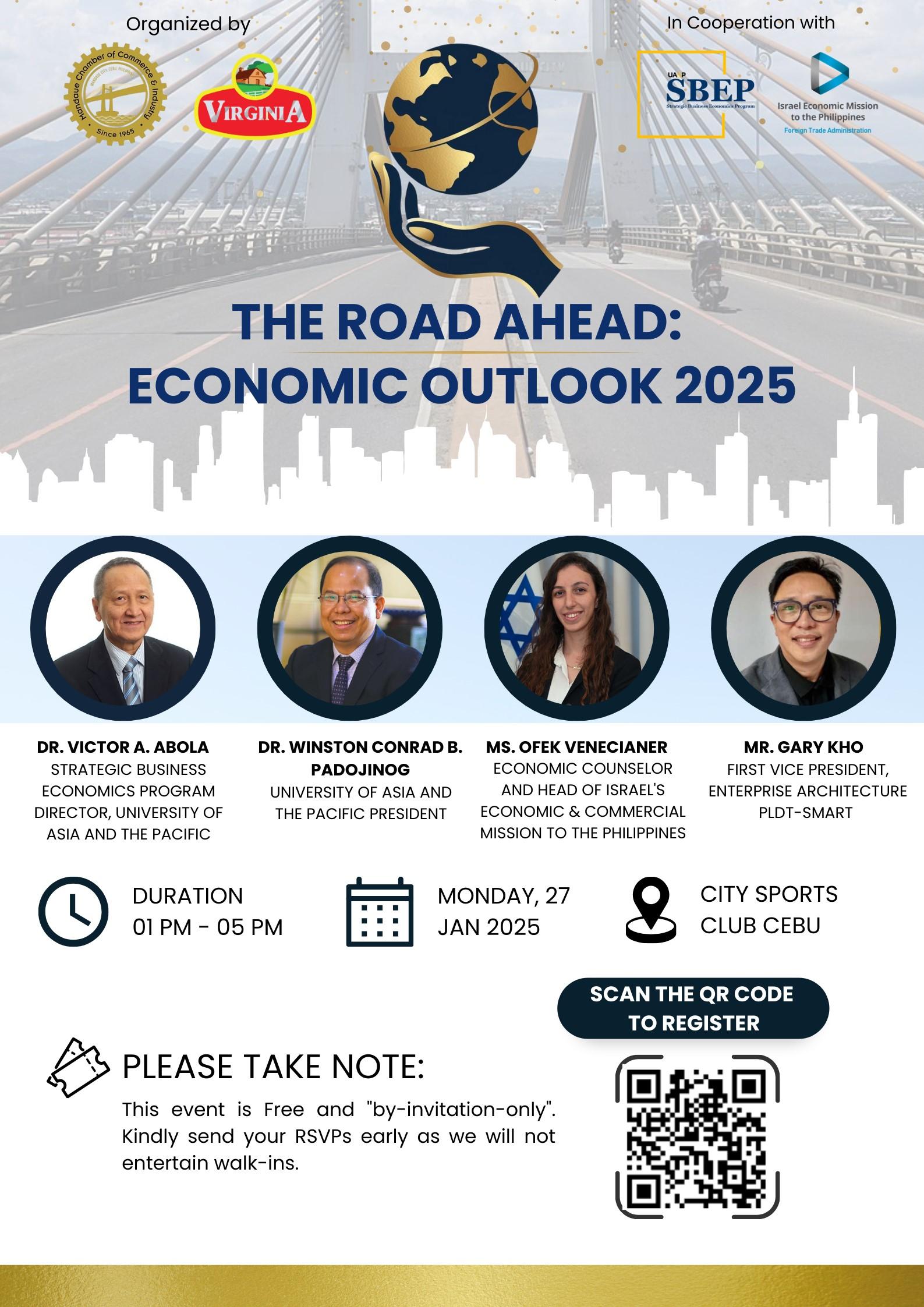
Dr. Victor A. Abola, Director of the Strategic Business Economics Program, served as one of the event’s resource speakers, offering a balanced yet forward-thinking analysis of the Philippine economy. His discussion highlighted both challenges and promising opportunities, underscoring the nation’s resilience and potential for sustained growth in the coming year.
A Year of Adjustments and Resilience
Dr. Abola reviewed the country’s economic performance in the third quarter of 2024, noting a slowdown in GDP growth due to a series of super typhoons. However, the Gross National Income (GNI) grew by an impressive 9.7%, a sign that the country’s economic fundamentals remain strong.
Despite challenges, several key drivers contributed to economic resilience under the administration of President Ferdinand Marcos Jr. These include increased infrastructure spending, higher employment rates in the services sector, and growing business and consumer confidence. However, paradoxically, poverty levels continue to rise, presenting a critical issue for policymakers to address.
2025 Forecast: Cautious Optimism
Looking ahead to 2025, Dr. Abola forecasted a GDP growth rate of 6.3%, with the industry and services sectors expanding at 6.0% and 6.5%, respectively. Inflation is expected to moderate to 2.7%, while the peso is projected to hover around PHP 61.00 per USD. The country’s Gross International Reserves will remain robust at USD 110 billion, reflecting a stable external position.
On the financial front, Dr. Abola expects a 12% to 15% surge in the Philippine Stock Exchange Index (PSEi), reaching 7,800 to 8,000 points. Meanwhile, the 3-month interest rate is projected at 3.5% per annum, and the 10-year Treasury bond rate at 4.75%, signaling a favorable environment for long-term investments.
Challenges in the Global and Domestic Landscape
Despite these positive indicators, Dr. Abola warned of downside risks, particularly geopolitical tensions in Asia, including potential conflicts involving China, Taiwan, and the Philippines. Additionally, the peso continues to depreciate despite stable external reserves, highlighting concerns about the country’s growing dependence on imports, even for essential goods like salt and bottled water.
Encouragingly, inflationary pressures are expected to ease, with global oil prices projected to decline due to excess supply from OPEC countries. This downward trend in fuel costs should provide relief to consumers and businesses alike.
Opportunities for Cebu: Infrastructure and Agriculture
Dr. Abola emphasized the need for increased regional economic activity and urged Cebu’s local government units (LGUs) and businesses to advocate for crucial infrastructure projects, including the Cebu Expressway and the fourth bridge connecting Mactan Island to mainland Cebu. These projects are vital in enhancing connectivity, reducing congestion, and boosting trade and investment opportunities in the province.
He also underscored the importance of strengthening the agricultural sector, stressing that true industrialization cannot be achieved without first securing an agricultural revolution. By investing in modern farming techniques, local agribusinesses, and rural development, Cebu can contribute to national food security while creating more jobs and economic opportunities.
The Road Ahead
Overall, Dr. Abola’s outlook for the Philippine economy in 2025 is a mix of challenges and opportunities. While global uncertainties and domestic structural issues persist, the country’s strong economic fundamentals, coupled with proactive policies and strategic investments, provide a promising path forward.
For Cebu, the call to action is clear: drive infrastructure development, support local industries, and invest in agriculture. By doing so, the region can position itself as a key player in the nation’s economic resurgence, ensuring a brighter and more sustainable future for its businesses and communities.



